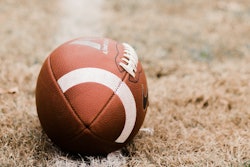Copyright 2017 The Palm Beach Newspapers, Inc.
All Rights Reserved
Palm Beach Post (Florida)
It's not just football.
Of course, everyone knows that, or at least everyone who has ever given serious consideration to the long-term consequences of contact sports.
At the end, however, of a week in which the degenerative brain issues of Miami Dolphins greats Nick Buoniconti and Jim Kiick have been so sadly spotlighted, it seems important to widen the discussion.
There is a reason the American Youth Soccer Organization banned the basic skill of heading the ball for players 10 and younger and limited practice time with headers for older players.
There is a reason NBA playoff games are interrupted by long reviews to determine if hard contact "above the shoulders" deserves a flagrant foul penalty or may simply be classified a common foul.
There is a reason that rodeo bull riders are wearing more helmets than cowboy hats these days, and well worth noting that even these excessive risk-takers have begun to look beyond the eight-second adrenalin charge of competition and on to the rest of their lives.
Is the wisest move simply to hand our kids video- game versions of their favorite sport and prohibit them from getting off that safe and cushy couch to try out for a team, or learn a few skateboard tricks, or even to climb a tree? Even without going to that extreme, obesity already is an epidemic in America.
So we encourage each other to get physically fit, and we scramble for tickets to gather and cheer the best of our athletes, and we wish that CTE (Chronic traumatic encephalopathy) hadn't wormed its way into the company of common sports acronyms like NFL and NHL.
It's always been there, though, just as it was in boxing. The difference is we're putting a name on it now and slathering ourselves with education as some form of protection. It took a lot of lawsuits against major sports leagues to get here, and much research must be done to get any further.
Repeated blows to the head, delivered to mice in laboratory settings, yes, that's part of the process, too, because the only way to absolutely confirm CTE's existence in a human being is through an autopsy of the brain. Nasty business all the way around, and many athletes have decided later in life to donate their brains and bodies for research once they are gone, a noble, helpful gesture.
This week, however, my digging into this topic turned up a different kind of response to the possibility of memory loss and other damages attributable to repeated sports concussions.
Stan Mikita, the Chicago Blackhawks hockey legend, has been dealing with Lewy body dementia for some time. He is 76, unable to connect with any of the spectacular memories that motivated the team to place a statue of him outside of Chicago's United Center, right near another one for Bobby Hull.
Mikita's family acknowledges Stan's earlier wish to have his brain donated for research. They will carry through on that that, but with little enthusiasm, and with no interest in joining any larger lawsuits against the NHL for negligence or any other allegation of wrongdoing.
"If he does have CTE, who cares? It's not going to change anything," Jane Mikita, Stan's daughter, told the Chicago Tribune. "He played a sport and a game that he loved and that provided us as a family with a wonderful upbringing. Hockey was good to Stan and Stan was good to hockey. There is no finger to be pointed."
Sidney Crosby probably feels the same way about knowing what he is getting into each time he steps onto the ice. He's the captain of the Pittsburgh Penguins, a two-time Stanley Cup champion, a superstar, but a man who missed big chunks of two earlier seasons with concussion symptoms.
In the playoff series just completed with Washington, Crosby sat out one game because of a concussion, and upon returning to action, slammed headfirst into the base of the boards. He got right up that time, though a little slowly, and played some more, and as the Penguins advance to the conference finals against Ottawa, Crosby will be out there again, thinking championship, thinking this is his 12th NHL season and there may not be another chance.
Related: Crosby Case Reveals Flaws in NHL Concussion Handling
Completely natural for an overachiever to operate that way. If young people are able to go, from youth leagues to the pros, they go. That attitude is part of what made them starters and important contributors in the first place.
The only attitude change that is truly possible here is by their coaches, their bosses, their fans. When an athlete displays concussion symptoms, no choice can be offered to them or their supervisors. They sit. They wait. They recover before risking another, and, like it or not, with no pressure to rush it.
Sounds easy in theory, but it's the difference between being happy down the road and winning right now, today. Americans don't handle that well, and it's not just in football. It's every decision made in our competitive world.
Read More of Today's AB Headlines
Subscribe to Our Daily E-Newsletter
Terms and Conditions Privacy Policy



































